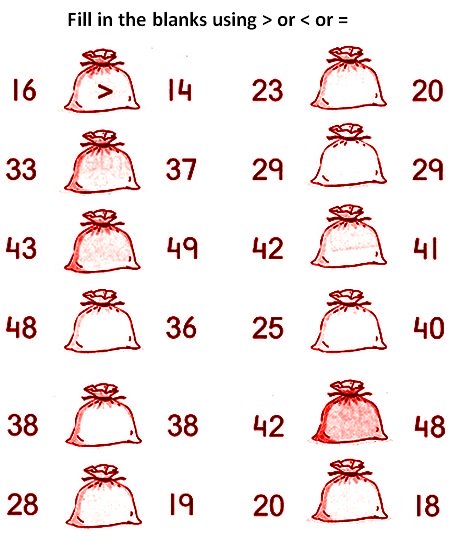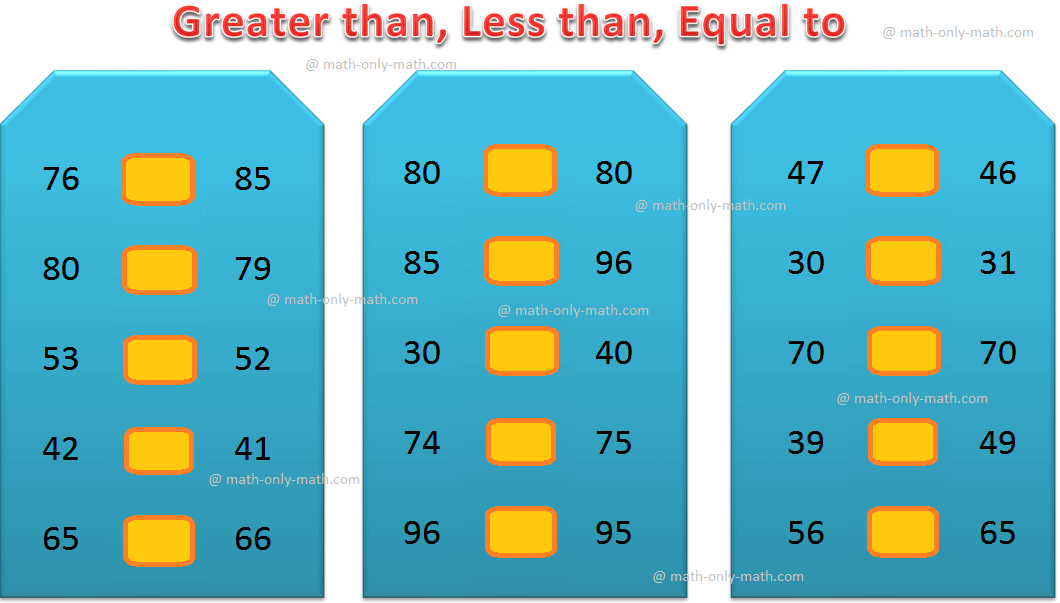Subscribe to our ▶️ YouTube channel 🔴 for the latest videos, updates, and tips.
Greater or Less than and Equal to
In math, greater or less than and equal to help the kids to understand how one number is different from the other number. Whether one number is bigger or smaller than the other number or both the numbers are equal.
● A number which comes after a given number in counting is greater
● A number which comes before a given number in counting is less than that number.
Important symbol or signs used to identify the numbers to understand the bigger number, smaller number and the number that is equal.
When one number is bigger than the other number; we use greater than sign >.
When one number is smaller than the other number; we use less than sign <.
When one number is equal to the other number; we use equal to sign =.
● > Right hand open is always greater than sign.
● < Left hand open is always greater than sign.
Bigger number > Smaller number
……………….. here it is greater than sign
Smaller number < Bigger number
……………….. here it is less than sign
Example:
● 5 is greater than 1
5 > 1
● 1 is less than 2
1 < 2
● 3 is equal to 3
3 = 3
Greater than, Less than and Equal To
Subscribe to our ▶️ YouTube channel 🔴 for the latest videos, updates, and tips.
Worksheet on Greater or Less than and Equal to
Worksheet on greater than Less than and Equal to Video
Subscribe to our ▶️ YouTube channel 🔴 for the latest videos, updates, and tips.
Questions and Answers on Comparing Numbers:
1. Compare the numbers in each set and insert > or < sign between the given numbers.
(i) 31 _____ 41
(ii) 46 _____ 61
(iii) 9 _____ 15
(iv) 28 _____ 38
(v) 66 _____ 42
(vi) 90 _____ 80
(vii) 77 _____ 71
(viii) 86 _____ 75
(ix) 33 _____ 44
Answer:
(i) <
(ii) <
(iii) <
(iv) <
(v) >
(vi) >
(vii) >
(viii) >
(ix) <
2. Fill in the blanks with the correct sign <, = or >.
Parents and teachers are requested to follow the kids that they first read the above discussion and then give the print out of this worksheet on greater or less than and equal to so, that children can easily complete the sheet using pencil.
Numbers - Worksheet
Greater or Less than and Equal to
Ascending Order or Descending Order
First Grade Math Activities
From Greater or Less than and Equal to HOME PAGE
Didn't find what you were looking for? Or want to know more information about Math Only Math. Use this Google Search to find what you need.




New! Comments
Have your say about what you just read! Leave me a comment in the box below. Ask a Question or Answer a Question.